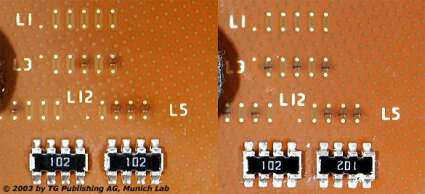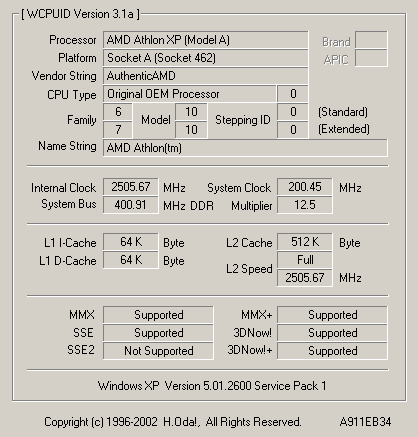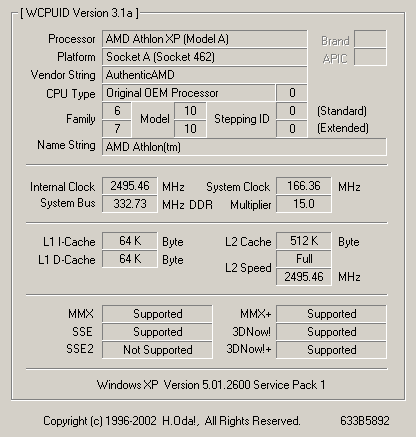Barton's Here: Athlon XP 3000+ vs. P4 3.06 GHz
Overclocking To 2500 MHz - How It Works, Continued
On the left, the Athlon XP 2200+ with the first pin of the L3 bridge closed. Right, a picture of the Barton with the first pin of the L3 bridge opened.
Another possibility for disabling the translation table is to close the first contact (seen from the left) of the L3 bridge. If the bridge is closed, a multiplier of anywhere from 13.0 to 20.5 is possible. However, this method has the disadvantage that the bridge is hard to remove again, if that becomes necessary. The third variant is to connect the corresponding pins on the underside of the socket. The pictures show all the details.
Athlon XP with 2500 MHz core speed and 200 MHz FSB speed: in this configuration, it could easily beat the P4 with 3.06 GHz. However, the processor is not consistently stable in operation.
By comparison: Athlon XP with 2500 MHz - but with 166 MHz FSB speed. This CPU is also in our benchmark charts.
Get Tom's Hardware's best news and in-depth reviews, straight to your inbox.
Current page: Overclocking To 2500 MHz - How It Works, Continued
Prev Page Overclocking To 2500 MHz - How It Works, Continued Next Page How It Works: Unlock The Multipliers 5.0 To 12.5

